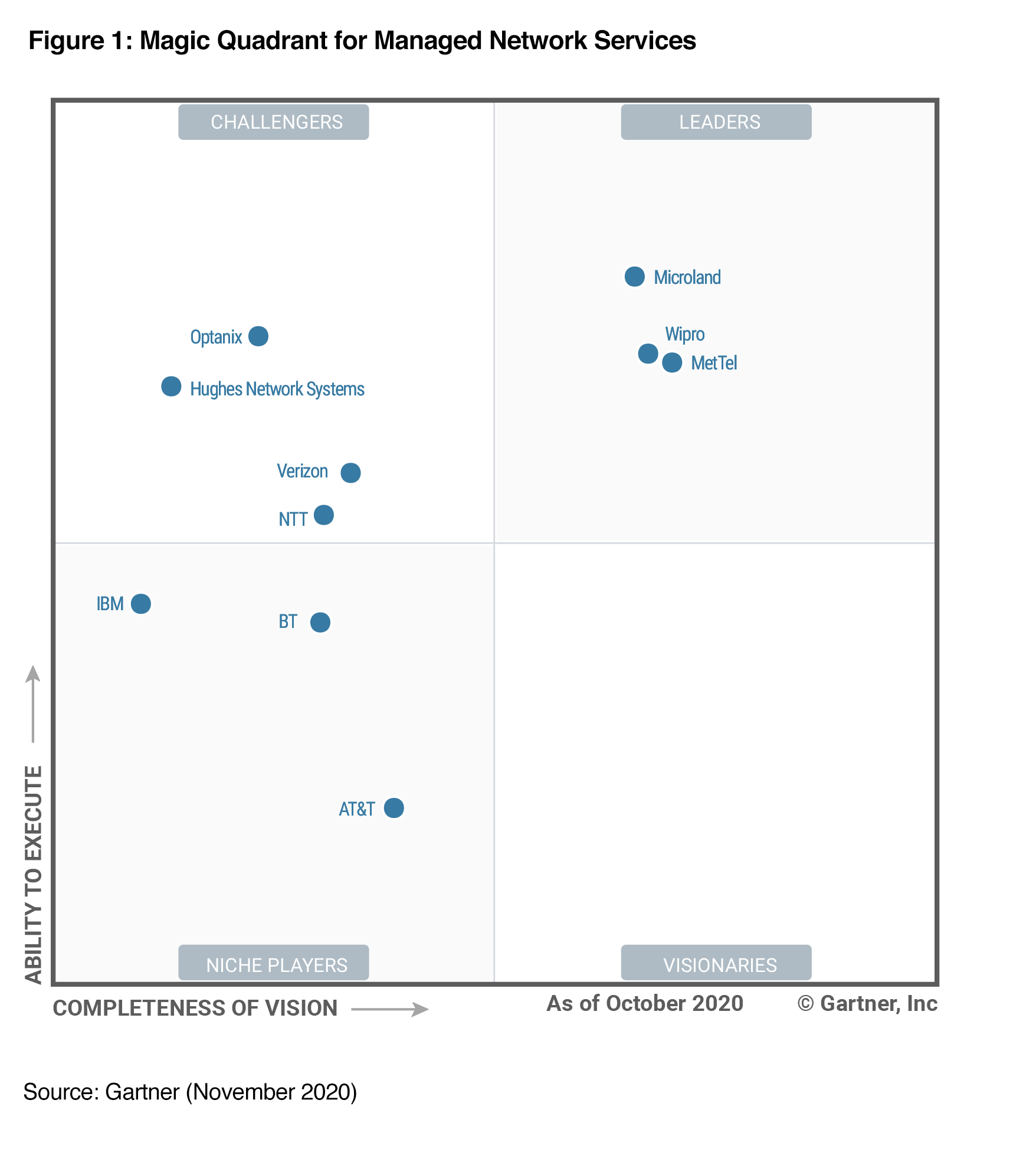
Capabilities to Look for in Managed Network Services Provider
What are Managed Network Services?
Gartner defines managed network services (MNSs) as a vendor’s delivery of primarily operational support for a networked IT environment in which the hardware assets, financial obligations and personnel are on the books of the enterprise customer. The vendors who deliver managed network services are commonly known as managed service providers, or MSPs.
How Does a Managed Service Provider Work?
Managed service providers remotely manage a customer’s IT infrastructure and end-user systems. The customer is the entity that owns or has direct oversight of the IT infrastructure or system being managed. The MSP is the service provider that delivers the outsourced services.
MSPs enable enterprise customers to outsource all aspects of the delivery, management and maintenance of one or more business services. This approach helps enterprises to achieve efficiencies in terms of cost, operations and staffing. It also frees up enterprises from having to fulfill the day-to-day tasks associated with maintaining their IT infrastructure and business services so they can instead focus on their core business.
MSPs usually operate under a subscription model. A lesser used model is the break/fix, or on-demand, outsourcing model. In this model, the service provider performs on-demand services and bills the enterprise customer only for the work done.
An MSP and its customers are typically bound by contractual service-level agreements (SLAs) that define performance, availability and quality metrics the MSP must achieve for the customer environments they are managing.
What Are the Benefits of MNS?
The benefits of managed network services to the enterprise are pretty well established:
- Smaller IT organizations can unburden themselves of the need to staff and maintain a full-fledged IT organization, while larger enterprises can lean on MSPs and managed network services providers to deliver specialized services and skills to augment their internal capabilities.
- The MNS approach provides enterprises with superior agility and flexibility when it comes to incorporating new technologies. It also permits rapid response to the need to scale services up or down depending on business need.
Both of these benefits enable enterprises to really concentrate on their core business goals and drive outcomes that are not constrained by the need to support their business services and underlying infrastructure.
What SLA Capabilities Should You Look for?
SLAs come in all shapes and sizes. They outline requirements around levels of performance, availability, responsibility, response times and more. SLAs are also fairly mature documents that are designed to address most operational situations.
So, when it comes to mitigating the business risks around utilizing an MNS, what are some of the other capabilities to look for that go beyond plain old SLAs and metrics?
The first thing to look at is the business model of the managed network services provider itself. Are they dependent on third-party relationships to provide a particular service? MNS providers that provide a consolidated solution – one that integrates people, processes and technology to provide the MNS – clearly have an advantage.
When change is called for, or problems occur, they are less dependent on others to do what’s necessary to rapidly restore and react to the situation. A well-integrated solution also enables full-stack resiliency – the ability to address issues across the technology layers that are covered by the MNS.
Next, what is the level of operational transparency they can provide? Can they provide visibility into the managed network services? Do they allow customers to see what their engineers see in their hosted/managed environment?
There are insights that can provide benefits to customer operations and services that otherwise may go unrealized. As an enterprise with an outsourced MSN, you will notice when a business service is degraded or compromised. But having visibility into the MNS goes a long way to provide the assurance and confidence in the MNS provider that is delivering the service. It also serves to hold the MNS provider accountable when things go awry.
What Makes a Good Managed Network Services Provider?
A good MNS provider goes beyond that – they can align their metrics and reporting to provide visibility into what matters most to the customer. They will take a business impact approach with real-time dashboards that clearly outline what services are affected when there is an issue.
Make sure your MNS provider is willing and able to provide an accountability dimension. You will want this capability enabled via e-bonding – for example, tickets made visible to you so you can actually observe operational activity firsthand versus simply having to take the provider’s word for it.
Committing to an MNS is a pivotal business decision for enterprises. MNS providers all have varying capabilities. Deciding which one to go with is a critical decision. After all, the very ability to conduct business is dependent on the MNSs that provide for customer and employee needs.
So, when it does come time to make your decision, it helps to go beyond SLAs. The true partnership and confidence that comes from a good MNS provider ensures a deeper level of visibility and accountability.
DOWNLOAD THE 2020 GARTNER MAGIC QUADRANT for managed network services (and see why Optanix was named a CHALLENGER IN THE MNS SPACE)
